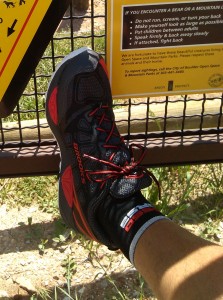
I have pain in my _______!
How do I know if it is tight, torn or just tired?
A clinic on understanding the differences between muscle tightness, an acute injury and muscle soreness and the appropriate steps to deal with it.
- Muscle tightness – This presents itself during the first part of a run as your heart rate begins to elevate and blood flow is directed to your muscles. It feels dull and achy in nature but as you gradually begin to warm up and settle into a rhythm the feeling disappears and quite often by the end of the run you forgot that you even felt tight.
- However, if a specific muscle or area regularly feels tight at the beginning of a run this may be an indicator that specific warming up like self-massage or dynamic stretching may be necessary to alleviate a potential injury.
- Persistent tightness that lingers or develops into a muscle imbalance may indicate that there is a need for strength training, gait analysis with a qualified professional or checking into whether there is excessive wear in footwear and time for a trip to your local running store.
- Acute Injury – This is something that comes on very suddenly with little warning. Primarily it results in a much sharper pain where you question whether you should continue to try and immediately run. It could present itself in a variety of ways, some of which are listed below.
- A misstep or fall in which there might be a quick twisting motion or impact that involves a mild to severe sprain such as an ankle ligament or bruising to a muscle because of impact with the ground.
- A muscle strain or tear that can result for a variety of reasons. Muscle fatigue, improper gait, dehydration, increasing training volume too quickly, increasing intensity/too much intensity or inadequate recovery methods in a training cycle are just some of the reasons that can lead to a muscle strain or tear.
- Acute injuries quite often begin to present themselves as the body fatigues, posture is not as strong and running form is compromised.
- If you are silently questioning whether you should “push through it” then you should probably not. It is better to swallow your pride and be back to running in a day or two than push through an injury thinking it will get better. Most of the time it will not.
- If it affects your gait and you begin to compensate because of discomfort or pain then you should stop and at the very least walk for a few minutes to see if that helps. If you are out training, it might be better to stop, have a seat and do some active stretching or self-massage.
- Muscle Soreness or Delayed Onset Muscle Soreness
- This is often felt 24-36 hours after training, specifically after higher intensity training or a race. This is not a bad thing, it just means that you pushed your body a bit and it needs time to adapt and recover. Often light activity, a very easy run, cross training, yoga or active stretching or massage therapy will help to speed the recovery and the soreness will go away in a day or so.
- If soreness is present after every run it may mean that you might be overtraining and the body is not adequately recovering between hard efforts. This creates a perfect storm for an acute injury that may lead to mandatory rest in order for the injury to heal. You want to avoid getting to this point! Listen to what your body is telling you!
